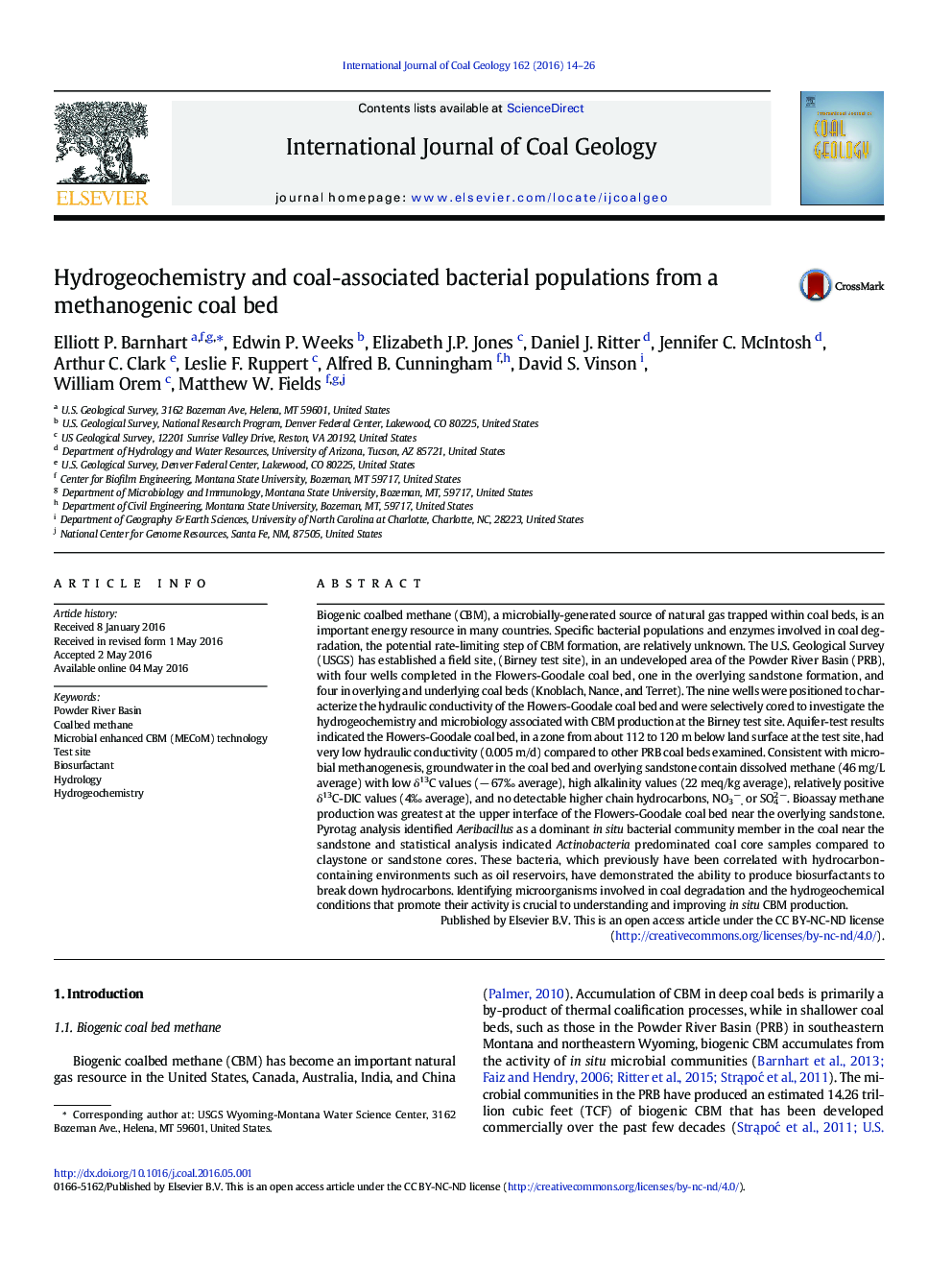| کد مقاله | کد نشریه | سال انتشار | مقاله انگلیسی | نسخه تمام متن |
|---|---|---|---|---|
| 8123829 | 1522541 | 2016 | 13 صفحه PDF | دانلود رایگان |
عنوان انگلیسی مقاله ISI
Hydrogeochemistry and coal-associated bacterial populations from a methanogenic coal bed
ترجمه فارسی عنوان
هیدروژئوشیمی و جمعیت باکتری های وابسته به زغال سنگ از یک زون زغال سنگ متانوژنی
دانلود مقاله + سفارش ترجمه
دانلود مقاله ISI انگلیسی
رایگان برای ایرانیان
کلمات کلیدی
موضوعات مرتبط
مهندسی و علوم پایه
علوم زمین و سیارات
زمین شناسی اقتصادی
چکیده انگلیسی
Biogenic coalbed methane (CBM), a microbially-generated source of natural gas trapped within coal beds, is an important energy resource in many countries. Specific bacterial populations and enzymes involved in coal degradation, the potential rate-limiting step of CBM formation, are relatively unknown. The U.S. Geological Survey (USGS) has established a field site, (Birney test site), in an undeveloped area of the Powder River Basin (PRB), with four wells completed in the Flowers-Goodale coal bed, one in the overlying sandstone formation, and four in overlying and underlying coal beds (Knoblach, Nance, and Terret). The nine wells were positioned to characterize the hydraulic conductivity of the Flowers-Goodale coal bed and were selectively cored to investigate the hydrogeochemistry and microbiology associated with CBM production at the Birney test site. Aquifer-test results indicated the Flowers-Goodale coal bed, in a zone from about 112 to 120 m below land surface at the test site, had very low hydraulic conductivity (0.005 m/d) compared to other PRB coal beds examined. Consistent with microbial methanogenesis, groundwater in the coal bed and overlying sandstone contain dissolved methane (46 mg/L average) with low δ13C values (â 67â° average), high alkalinity values (22 meq/kg average), relatively positive δ13C-DIC values (4â° average), and no detectable higher chain hydrocarbons, NO3â, or SO42 â. Bioassay methane production was greatest at the upper interface of the Flowers-Goodale coal bed near the overlying sandstone. Pyrotag analysis identified Aeribacillus as a dominant in situ bacterial community member in the coal near the sandstone and statistical analysis indicated Actinobacteria predominated coal core samples compared to claystone or sandstone cores. These bacteria, which previously have been correlated with hydrocarbon-containing environments such as oil reservoirs, have demonstrated the ability to produce biosurfactants to break down hydrocarbons. Identifying microorganisms involved in coal degradation and the hydrogeochemical conditions that promote their activity is crucial to understanding and improving in situ CBM production.
ناشر
Database: Elsevier - ScienceDirect (ساینس دایرکت)
Journal: International Journal of Coal Geology - Volume 162, 15 May 2016, Pages 14-26
Journal: International Journal of Coal Geology - Volume 162, 15 May 2016, Pages 14-26
نویسندگان
Elliott P. Barnhart, Edwin P. Weeks, Elizabeth J.P. Jones, Daniel J. Ritter, Jennifer C. McIntosh, Arthur C. Clark, Leslie F. Ruppert, Alfred B. Cunningham, David S. Vinson, William Orem, Matthew W. Fields,
